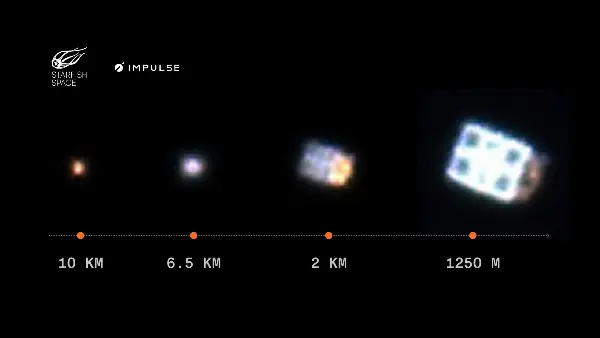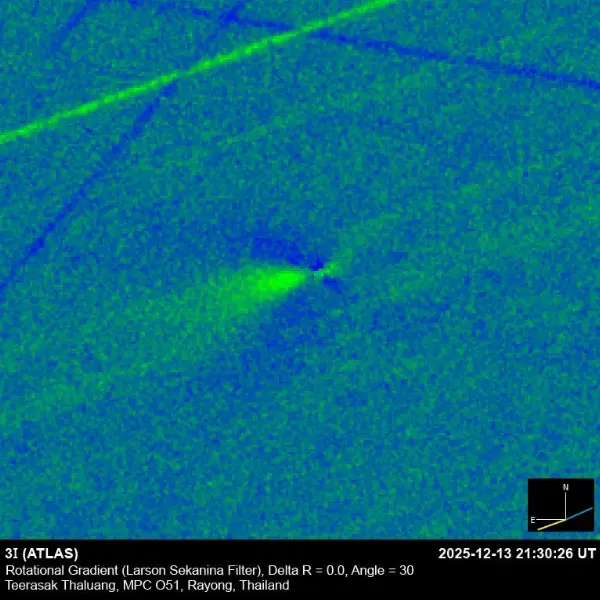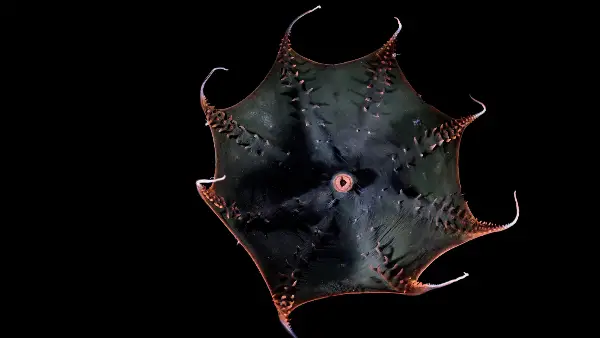Science

Earth's Atmosphere Leaks to the Moon, Carrying Valuable Resources
Atoms and molecules from Earth's atmosphere have been traveling to the moon for billions of years, a new study has found. This phenomenon occurs when the solar wind knocks these particles into space, and they are then transported to the moon along magnetic field lines. The discovery helps explain the presence of volatiles, such as water, carbon dioxide, and nitrogen, in lunar regolith samples brought back by Apollo astronauts. Researchers at the University of Rochester used computer simulations to model the transportation of these particles and found that the Earth's magnetic field acts as a "highway" for them to reach the moon. This process has been ongoing since at least 3.7 billion years ago, when Earth's magnetic field is believed to have formed. The findings suggest that the lunar regolith could hold a long-term record of Earth's atmospheric history, providing valuable insights into the planet's climate, environment, and life. Additionally, the study implies that the moon may have a significant abundance of resources, such as water, that could be useful for future human settlements. The research also has broader implications for understanding atmospheric escape on other planets, such as Mars, and could inform the search for life beyond Earth. The study's results were published in the journal Communications Earth & Environment on December 11.

Glaciers in the European Alps to Reach Peak Extinction Rate in Eight Years
Glaciers in the European Alps are expected to reach their peak rate of extinction in just eight years, with over 100 glaciers melting away permanently by 2033. This rapid melting is driven by human-caused global heating, which is one of the clearest signs of the climate crisis. Currently, about 200,000 glaciers remain worldwide, with around 750 disappearing each year. However, this pace is forecast to accelerate rapidly as emissions from burning fossil fuels continue to be released into the atmosphere. According to a recent study, if current climate action plans continue, global temperatures will rise to about 2.7C above preindustrial levels, resulting in the loss of 3,000 glaciers per year by 2040. This will have significant impacts on communities that rely on glaciers for water sources, tourism, and spiritual significance. The study analyzed over 200,000 glaciers using satellite images and global glacier models, finding that regions with small and fast-melting glaciers are the most vulnerable. The researchers estimate that 80% of today's glaciers will have disappeared by the end of the century, with larger glaciers taking longer to melt. They emphasize the need for urgent action to help communities adapt to changing conditions, with 2 billion people relying on mountain water for regular supplies and food security. Rapid cuts to carbon emissions could limit annual glacier losses to around 2,000 per year by 2040, highlighting the importance of addressing the climate crisis to preserve these vital natural features.

Recent Discoveries and Events in Science: "Little Foot," Geminid Meteor Shower, and Comet 3I/ATLAS
A research team suggests that the hominin fossil "Little Foot" could be an unknown human ancestor. The fossil, a near-complete Australopithecus skeleton from South Africa, was first unveiled in 2017, but its place in the human family tree has been debated. A new study argues that "Little Foot" does not fit into previously known species classifications, potentially making it a new species. Meanwhile, the Geminid meteor shower peaked over the weekend, offering ideal viewing conditions due to a near-moonless sky. The shower, which has been active since December 4, will continue until December 20. In other news, the interstellar comet 3I/ATLAS is making its closest approach to Earth this week, coming within 167 million miles of the planet on December 19. Astronomers worldwide are studying the comet, which is only the third interstellar object recorded in our solar system and potentially the oldest comet ever seen. Additionally, a large genetic study has found that 14 psychiatric disorders can be grouped into five genetic profiles. The study, which analyzed data from over 1 million people, identified shared genetic mechanisms that may underlie these disorders. However, experts note that correlation does not equal causation, and the genetics of psychiatric conditions are complex, interacting with environmental factors and personal experiences. A newfound species of pumpkin toadlet, Brachycephalus lulai, has been discovered in the mountains of southern Brazil. The tiny frog, which is bright orange with green and brown markings, is part of a group of miniaturized diurnal frogs. Researchers are calling for the protection of the frog's habitat to safeguard its future and that of other unique species in the area.

Private Spacecraft Successfully Rendezvous in Earth Orbit on Remora Mission
Two commercial spacecraft, both Mira orbital transfer vehicles from Impulse Space, have successfully demonstrated autonomous rendezvous and proximity operations (RPO) technology in Earth orbit. The mission, called Remora, was a collaboration between Impulse Space and Starfish Space, and involved one Mira spacecraft using Starfish's navigation software to approach within 4,100 feet (1,250 meters) of another Mira. The milestone was achieved in less than a year, with the mission concept to execution taking just nine months. The modified Mira spacecraft was launched in January 2025 on SpaceX's Transporter 12 rideshare mission and was equipped with a single camera and Starfish's core guidance, navigation, and control (GNC) software suite. The spacecraft conducted several operations, including deploying two cubesats and performing precision engine burns, before embarking on the Remora mission. The close approach occurred in late October over several hours, with the spacecraft using Starfish's Cetacean and Cephalopod software to rendezvous autonomously with the first space-flown Mira. The success of the Remora mission is a major milestone for Starfish Space, which is developing a small, versatile vehicle called Otter to provide satellite-servicing functions. The company plans to launch its first Otter vehicles next year, with the goal of providing inspection, refueling, repair, and de-orbiting services for satellites.

ULA Atlas V Rocket to Launch 27 Amazon Internet Satellites on Tuesday
A United Launch Alliance (ULA) Atlas V rocket is scheduled to launch 27 Amazon Leo spacecraft into orbit on Tuesday, December 16, during a 29-minute window that opens at 3:28 a.m. EST (0828 GMT). The launch will take place from Florida's Cape Canaveral Space Force Station. This mission is part of Amazon's planned satellite-internet megaconstellation, which will eventually consist of about 3,200 satellites in low Earth orbit (LEO). The network, previously known as Project Kuiper, aims to provide internet connectivity to people around the globe. Six missions have been completed to date, launching 153 Project Leo satellites into orbit. The Atlas V rocket has been used for three of these missions and will be phased out in favor of the new Vulcan Centaur rocket. Interestingly, SpaceX is also involved in building out the Project Leo network, with its Falcon 9 rocket being one of the launch vehicles used. Other rockets, including Arianespace's Ariane 6 and Blue Origin's New Glenn, will also contribute to the launches. The U.S. Space Force weather squadron predicts a 95 percent chance of acceptable weather for the launch. When operational, Project Leo will compete with SpaceX's Starlink megaconstellation, which already provides service to customers using over 9,000 satellites in LEO. The launch can be watched live courtesy of ULA or directly via the company's website.

Exoplanet WASP-121b Observed with Record-Breaking Helium Tails
Astronomers have made a groundbreaking observation of the exoplanet WASP-121b, also known as Tylos, which is located about 880 light-years from Earth. Using the James Webb Space Telescope (JWST), researchers monitored the planet's atmospheric escape throughout its full orbit, revealing two enormous tails of helium that stretch more than halfway around its star. This is the first time such a spectacle has been observed, providing new insights into the phenomenon of atmospheric escape. Tylos, an ultra-hot Jupiter, is an extreme exoplanet with a highly irregular atmosphere, featuring clouds of vaporized metal, rains of rubies and sapphires, and the fastest atmospheric jet stream known to science. The intense radiation from its star heats the planet's atmosphere to thousands of degrees, causing lighter gases like hydrogen and helium to escape into space. The observation of Tylos' helium tails, which cover an area more than 100 times the diameter of the planet, poses a puzzle for astronomers, as existing computer models struggle to explain the origin of the double tails. Further research is needed to understand the complex physical processes involved in atmospheric outflows and to inform new 3D simulations. This discovery has significant implications for our understanding of planetary evolution, including the potential transformation of massive gas giants into smaller, Neptune-like planets or even rocky cores. The study, published in Nature Communications, marks a major breakthrough in the field of exoplanetary science.

SpaceX Delays Falcon 9 Launch of 29 Starlink Satellites to Tuesday
SpaceX has delayed the launch of a Falcon 9 rocket from NASA's Kennedy Space Center from Monday to Tuesday. The Starlink 6-99 mission aims to add 29 Starlink V2 Mini satellites to SpaceX's broadband internet constellation in low Earth orbit. The delay was announced without explanation, but liftoff winds and booster recovery weather were expected to be issues at the original launch time. The Falcon 9 rocket will now launch no sooner than 7:45 a.m. EST (1245 UTC) on Tuesday, flying on a south-easterly trajectory from Florida's Space Coast. The mission will utilize the Falcon 9 booster with tail number 1094, which will be its sixth flight. After liftoff, the booster will target an autonomous landing on the drone ship 'Just Read the Instructions' in the Atlantic Ocean, marking the 146th landing on this vessel and the 552nd booster landing for SpaceX. Spaceflight Now will provide live coverage of the launch beginning about an hour prior to liftoff. The Starlink 6-99 mission is part of SpaceX's ongoing efforts to expand its satellite constellation, which has recently seen significant activity, including the completion of the 550th booster landing amid a Saturday night Falcon 9 flight. SpaceX also broke its launch pad turnaround record with a recent flight of a Falcon 9 rocket from Cape Canaveral.

Language Models Demonstrate Surprising Ability to Analyze Language
Researchers have long debated whether language models can truly understand and analyze language like humans. A recent study challenges this notion, showing that some language models can perform sophisticated linguistic analysis, including diagramming sentences and recognizing ambiguity. The study, conducted by Gašper Beguš and his colleagues, tested several large language models on various linguistic tasks, including recursion, phonology, and syntax. One model, OpenAI's o1, performed impressively, exceeding expectations and demonstrating a high-level "metalinguistic" capacity. The model was able to analyze language in a way similar to a graduate student in linguistics, including recognizing ambiguity and generating syntactic trees. The study's findings have significant implications for our understanding of language models and their capabilities. While some researchers have argued that language models are limited to predicting the next word in a sentence, the study suggests that they can, in fact, demonstrate a deeper understanding of language. However, it is still unclear whether language models can truly surpass human language skills or if there are limits to their abilities. The study's authors note that language models are still limited by their training data and algorithms, but they believe that future advancements could lead to even more impressive capabilities. The study's results have sparked debate among researchers, with some arguing that language models are still far from true understanding and others seeing the potential for significant advancements. As language models continue to improve, it is likely that they will play an increasingly important role in various applications, from language translation to text generation. Ultimately, the study highlights the complexities and nuances of language and the ongoing efforts to develop more sophisticated language models that can truly understand and analyze human language.

NASA's Curiosity Rover Achieves Breakthroughs in Mars Exploration
The Mars Science Laboratory's Curiosity rover has made significant progress in its exploration of Mars, particularly at the Nevado Sajama drill site. The team at NASA's Jet Propulsion Laboratory (JPL) has completed a series of detailed observations, including the creation of a high-resolution 360-degree stereo mosaic of the drill site. This was achieved using a dual-camera setup, comprising the wide-angle M34 Mastcam and the 100mm telephoto Mastcam camera. The rover collected hundreds of frames over several sols, piecing them together into a panoramic view. This meticulous approach demonstrates the complexity of Curiosity's tasks and the advanced technology involved in capturing Mars in its full splendor. Additionally, the rover acquired a "MAHLI after dark" image of the Nevado Sajama drill hole using its Mars Hand Lens Imager (MAHLI), which is illuminated by small LED lights surrounding the camera. A major scientific milestone was the delivery of the last drilled sample from Nevado Sajama to the SAM (Sample Analysis at Mars) instrument for a detailed analysis of organic compounds. The analysis was successfully completed, marking another key piece in the puzzle of understanding whether Mars could have supported life. The team hopes to detect the fundamental building blocks of life or learn more about the planet's chemical processes. The Curiosity rover is now preparing to move on to new locations, with plans to collect important observations nearby before the holidays. The science team will spend the next couple of sols collecting data, ensuring that the rover's scientific mission continues to inform our understanding of Mars. With its ability to adapt to new challenges, the Curiosity mission is far from over, and each day brings new discoveries and insights.

US Postal Service Unveils 2026 Priority Mail Stamps Featuring Deep Space Images
The US Postal Service has announced its latest Priority Mail stamps for 2026, featuring images of the universe captured by NASA's James Webb Space Telescope. The Priority Mail stamp depicts the Crab Nebula, while the Priority Mail Express stamp shows a galaxy pair. These images celebrate America's continued exploration of deep space and were captured using the telescope's Near-Infrared Camera and Mid-Infrared Instrument. The Crab Nebula image, which took 6,500 light years to reach Earth, has been available since 2023 and provides insights into the composition of the ejected material. The galaxy pair image, located 80 million light years from Earth, shows two galaxies passing each other, with bright red lines indicating where material may have collided. The stamps are part of the USPS's expedited deliveries, with Priority Mail packages delivered within one to three business days and Priority Mail Express offering one to three day delivery, including Sundays and holidays. The release date for the stamps is pending approval of new Priority Mail and Priority Mail Express Flat Rate Envelope rates, which would raise prices by about 6.6 percent and 5.1 percent, respectively. The USPS has featured NASA images on its Priority Mail stamps for the third year in a row, with art director Greg Breeding selecting the photos for the new issues.

Interstellar Object 3I/ATLAS Displays Unusual Anti-Tail as it Approaches Earth
The interstellar object 3I/ATLAS is currently approximately 270.5 million kilometers from Earth, with its closest approach expected on December 19, 2025, at a distance of 269.9097 million kilometers. Recent images of 3I/ATLAS, including one taken on December 13, 2025, by Teerasak Thaluang, show a prominent anti-tail pointing towards the Sun. This feature is uncommon for comets and has been consistently observed since the object's approach, including in images from the Hubble Space Telescope. The anti-tail's nature is mysterious because it contradicts the expected behavior of gas and dust particles being pushed away from the Sun by solar radiation pressure and the solar wind. To explain this phenomenon, Avi Loeb has written three scientific papers, proposing that the anti-tail could be due to the scattering of sunlight by fragments of ice shed from 3I/ATLAS or a swarm of objects lagging behind it. Further analysis of the latest Hubble image may help determine the correct explanation for the anti-tail. The study of 3I/ATLAS and its unusual features offers an opportunity to learn more about the physics of interstellar objects and their behavior in our solar system. As 3I/ATLAS continues to approach Earth, scientists will closely monitor its activity and features, seeking to understand the underlying causes of its unique anti-tail. By examining anomalies like this, researchers can gain new insights into the nature of interstellar objects and the universe.

Genome of Elusive Vampire Squid Reveals Secrets of Cephalopod Evolution
The vampire squid, with its glowing eyes and dark ruby coloring, has finally revealed its genetic secrets. Researchers have sequenced the genome of the vampire squid and discovered that its chromosomes still resemble those of squids and cuttlefish, despite belonging to the octopus order. This discovery hints at what the common ancestor of modern squids and octopuses may have looked like at the genetic level 300 million years ago. The vampire squid is considered a "living fossil" and its genome is the largest cephalopod genome sequenced to date, with 11 billion base pairs. The researchers used a genetic analysis platform to sequence the DNA of a tissue sample from a vampire squid collected in the West Pacific Ocean. They compared the vampire squid's genome to that of other cephalopods and found that it has retained much of its ancestral, squid-like chromosomal arrangement. This is in contrast to modern octopuses, which have DNA that consistently gets reshuffled, resulting in some chromosomal mixing. The finding is significant for cephalopod scientists, as it helps to resolve why vampire squids retain much of their ancestral, squid-like traits. The fully sequenced genome is also valuable because vampire squids are difficult to study due to their deep-sea habitat and rarity. The discovery reinforces the notion that vampire squids are a key to understanding the evolution of cephalopods, and their unique characteristics make them an interesting subject for further study.

SpaceX Recovers 550th Falcon 9 Booster After Launching 27 Starlink Satellites
SpaceX has successfully recovered its 550th Falcon 9 booster, marking a significant milestone in the company's reusable rocket technology. The recovery came after the rocket's first stage launched 27 Starlink satellites into space from Vandenberg Space Force Base in California. The Falcon 9 rocket lifted off at 12:49 a.m. EST on Sunday and the upper stage deployed the satellites into low Earth orbit about an hour later. The first stage, known as B1093, landed on the autonomous drone ship "Of Course I Still Love You" in the Pacific Ocean, marking its ninth trip to space and back. The launch added to the Starlink megaconstellation, which now has over 9,300 active units out of the more than 10,000 launched since 2019. The Starlink network provides broadband internet access to regions around the world and enables wifi on airlines and cell-to-satellite access on select providers. This was SpaceX's 162nd Falcon 9 flight in 2025 and its 580th overall. The successful recovery of the Falcon 9 booster is a testament to SpaceX's innovative technology and its ability to reuse rockets, reducing the cost of access to space. The milestone comes almost 10 years after SpaceX first landed a rocket stage, which occurred on December 21, 2015. Since then, the company has made significant strides in reusable rocket technology, with Sunday's launch being a prime example. With the continued expansion of the Starlink network, SpaceX is poised to play a major role in providing global internet access and enabling new technologies.

V Sagittae Star System Predicted to Produce Visible Nova and Supernova
The V Sagittae star system, located about 10,000 light-years away, is expected to produce a nova explosion that will be visible from Earth with the naked eye, followed by a supernova explosion so bright it will be visible during the day. The system consists of a white dwarf and a more massive stellar companion that are locked in a tight orbit, with the white dwarf accumulating material from its companion at a rate never seen before. Researchers have analyzed the light emitted by V Sagittae and identified it as a supersoft X-ray source, with a sustained thermonuclear reaction on the white dwarf's surface. The system's chaotic accretion and extreme brightness are signs of its imminent death, which will be prefaced by a nova explosion. The supernova explosion is predicted to occur as early as 2067, although stellar evolution is hard to predict exactly. The V Sagittae system is considered one of the most important and intriguing in the galaxy, and its eventual explosion will be a spectacular sight. The researchers used data from the X-Shooter spectrograph at the European Southern Observatory's Very Large Telescope to study the system and better understand its characteristics. The study suggests that the entire system may be below 2.1 solar masses, with both the white dwarf and its companion weighing in at around 1 solar mass. The system's extreme brightness and chaotic accretion make it a unique and fascinating object of study.

Scientists Discover Potential "Dark Stars" Using James Webb Space Telescope
Scientists working with the James Webb Space Telescope have discovered three unusual astronomical objects in early 2025, which may be examples of "dark stars." The concept of dark stars has existed for some time and could alter scientists' understanding of how ordinary stars form. Dark stars are not exactly stars and are not dark, but rather objects that shine due to a process driven by dark matter. The "dark" in the name refers to the process that makes them shine, not their brightness. Dark matter, which makes up approximately 27% of the universe, is a mysterious substance that cannot be directly observed. It is thought to be made up of electrically neutral particles that annihilate each other, releasing energy in the process. This energy could heat the hydrogen and helium gas, preventing it from further collapse and delaying the typical ignition of nuclear fusion. Dark stars are expected to be very old, large, and cooler on the surface, yet highly luminous. They are also expected to be enormous, with radii of about tens of astronomical units. Some supermassive dark stars are theorized to reach masses of roughly 10,000 to 10 million times that of the sun. The James Webb Space Telescope may have detected some dark stars, which could explain the formation of early black holes. However, the idea of dark stars is not universally accepted, and more observational data and theoretical advancements are needed to solve this mystery. The discovery of dark stars could shed light on the early universe and the formation of supermassive black holes. If dark stars exist, they could provide an alternative method to find dark matter. Researchers emphasize that they will need more data to confirm the existence of dark stars and understand their role in the universe. The study of dark stars is an ongoing area of research, and scientists are working to gather more evidence to support or refute the idea of these mysterious objects.

Mysterious 12.4-Mile-Thick Rock Layer Discovered Beneath Bermuda
Scientists have made a surprising discovery beneath the oceanic crust under Bermuda, finding a strange, 12.4-mile-thick rock layer. This layer, which has never been seen before in any other similar layer worldwide, is emplaced beneath the crust, within the tectonic plate that Bermuda sits on. The origin of this layer is not entirely clear, but it may be related to volcanic activity that ceased in the region around 31 million years ago. The discovery was made by study lead author William Frazer, a seismologist at Carnegie Science, and co-author Jeffrey Park, a professor of Earth and planetary sciences at Yale University. They used recordings from a seismic station on Bermuda to get an image of the Earth down to about 31 miles below the island. The layer is less dense than the surrounding rock and may be helping to hold up the island as an area of high relief in the Atlantic Ocean. Researchers believe that the layer could be a remnant of volcanic activity that occurred in the region millions of years ago. Further research is needed to fully understand the nature and origin of this mysterious layer. Frazer is now examining other islands around the world to find out if there are any similar layers, or whether Bermuda is truly one of a kind. The discovery sheds new light on the geological history of Bermuda and the formation of oceanic swells. It also highlights the complexity and uniqueness of the Earth's interior, and the need for continued exploration and research to understand our planet's many mysteries.

International Space Station Crew Conducts Research and Maintenance
The seven members of the Expedition 74 crew on the International Space Station (ISS) conducted various research experiments and maintenance tasks from December 8-12, 2025. JAXA astronaut Kimiya Yui captured a stunning view of Earth, showcasing the "skies of blue and clouds of white." The crew studied stem cells, with NASA astronaut Zena Cardman observing their production in microgravity. They also participated in a Roscosmos experiment using virtual reality goggles to track vision and adapt to microgravity. The crew devoted time to maintaining the space station's systems, including installing and soundproofing the JEM Demonstration of CO2 Removal System. They also prepared the JAXA's HTV-X1 cargo ship for its departure in January and serviced one of the space station's restrooms. NASA astronaut Chris Williams discussed his path to becoming an astronaut and serving on the ISS during an in-flight interview. As of December 12, there are seven people aboard the ISS, with two docked crew spacecraft and four cargo spacecraft. The space station has been continuously crewed for 25 years, 1 month, and 10 days. The Expedition 74 crew consists of astronauts from NASA, JAXA, and Roscosmos, working together to conduct research and maintain the space station.

New Insulating Material MOCHI Boosts Window Energy Efficiency
A team from the University of Colorado Boulder has designed a new, thin insulator called Mesoporous Optically Clear Heat Insulator (MOCHI) to improve window energy efficiency. MOCHI is a silicone gel that traps air within a network of small pores, providing effective insulation while remaining almost completely transparent. The material is available in large slabs or thin sheets and can be applied to the inside of any window. According to Ivan Smalyukh, a senior author and CU Boulder physics professor, the goal is to maintain comfortable indoor temperatures without wasting energy. MOCHI's structure is described as a "high-tech version of Bubble Wrap" and is over 90 percent air. A five-millimeter-thick sheet of MOCHI can block heat so well that it can safely hold a flame. The material is an improvement on aerogels, which are often used by NASA but lack the clarity needed for living rooms. The creation of MOCHI involves a careful fabrication process to achieve transparency, and its potential extends beyond simple window coating to harnessing sunlight for sustainable energy. While MOCHI is currently made in thin sheets in the lab and is not yet available to consumers, the team believes the production method can be made more efficient with relatively inexpensive materials.

Geminids Meteor Shower Peaks Tonight, Visible in Both Hemispheres
The Geminids meteor shower will peak tonight, December 13, 2025, offering a spectacular display of meteors zipping through the night sky at a rate of 120 per hour, according to NASA. This annual event occurs every December and will be visible in both the Northern and Southern Hemispheres, with the best view available to stargazers in the Northern Hemisphere. The Geminids shower originates from Asteroid 3200 Phaethon, a relatively small celestial body that is approximately 3.17 miles across. Unlike most meteor showers, which are caused by debris from comets, the Geminids are unique in that they come from an asteroid. Scientists are still trying to understand the nature of Phaethon, which is potentially a "dead comet" or a "rock comet." To witness the Geminids, skywatchers can lie flat on their backs outside with their feet facing south, allowing their eyes to adjust to the dark after about 30 minutes. The meteor shower will be visible until dawn, providing a dazzling display of yellow streaks lighting up the night sky. With clear skies and a bit of patience, viewers can enjoy this spectacular astronomical event.